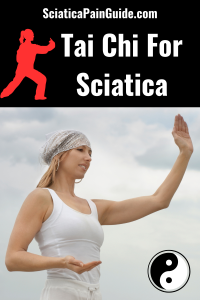Tai Chi for Sciatica
Discover the soothing benefits of Tai Chi for sciatica relief. Learn gentle movements to ease pain and enhance well-being. Dive in now! As someone who has dealt with the challenges of sciatica firsthand, I understand the debilitating effects it can have on daily life. The constant pain, tingling sensations, and numbness caused by sciatica can make even simple tasks seem daunting. However, through exploring various forms of relief, I stumbled upon Tai Chi, a gentle yet powerful practice that has made a significant difference in managing my sciatica symptoms.
Understanding Sciatica
Before delving into how Tai Chi can help alleviate sciatica symptoms, it’s essential to grasp the nature of this condition. Sciatica is not a disorder in itself but a symptom of an underlying medical condition, typically involving compression or irritation of the sciatic nerve. This can result from various factors, such as a herniated disc, spinal stenosis, or even muscle tightness.
The hallmark signs of sciatica include sharp pain radiating along the path of the sciatic nerve, which runs from the lower back through the hips and down each leg. Other symptoms may include numbness, tingling sensations, and weakness in the affected leg. These symptoms can range from mild discomfort to severe pain, making it challenging to perform everyday activities like walking, sitting, or standing for prolonged periods.
Treat Sciatica Pain with Tai Chi
Benefits of Tai Chi for Sciatica
Tai Chi, often described as “moving meditation,” is an ancient Chinese martial art that combines gentle flowing movements with deep breathing and mindfulness. While it may not seem like an obvious choice for managing sciatica, Tai Chi offers a myriad of benefits that can greatly improve the overall quality of life for individuals dealing with this condition.
How Tai Chi Helps with Sciatica
One of Tai Chi’s key advantages is its low-impact nature, making it suitable for people of all ages and fitness levels, including those with sciatica. Unlike high-intensity exercises that may exacerbate symptoms, Tai Chi focuses on slow, deliberate movements that promote flexibility, strength, and balance without putting undue stress on the joints or spine.
The core principles of Tai Chi, including proper body alignment, relaxation, and controlled breathing, are particularly beneficial for relieving tension and discomfort associated with sciatica. By gently stretching and strengthening the muscles surrounding the spine and pelvis, Tai Chi helps alleviate pressure on the sciatic nerve, reducing pain and promoting healing.
Moreover, Tai Chi’s emphasis on mindfulness and mental focus can help individuals with sciatica develop a greater awareness of their body and its sensations, allowing them to better manage pain and discomfort. By learning to relax and release tension through TC practice, individuals can experience significant relief from sciatica symptoms while fostering a sense of calm and well-being.
Starting Tai Chi for Sciatica
If you’re considering incorporating Tai Chi into your sciatica management plan, it’s essential to approach it with caution and care. Before beginning any new exercise regimen, especially if you have underlying health issues like sciatica, it’s crucial to consult with your healthcare provider to ensure that it is safe and appropriate for your condition.
Once you’ve received the green light from your healthcare provider, the next step is to find a qualified TC instructor with experience working with individuals with sciatica or similar conditions. A knowledgeable instructor can guide you through proper techniques and modifications to accommodate any physical limitations or discomfort you may experience.
When starting, listening to your body and progressing at your own pace is important. Begin with basic movements and gradually build up your practice as you become more comfortable and confident. Pay attention to how your body responds to each movement and adjust as needed to avoid exacerbating your sciatica symptoms.
Incorporating Tai Chi into Daily Routine
Consistency is key to reaping the full benefits. Set aside dedicated time each day to practice Tai Chi, even if it’s just for a few minutes at a time. Integrating Tai Chi into your daily routine can gradually build strength, flexibility, and resilience, helping to manage and prevent sciatica flare-ups.
In addition to standalone sessions, consider incorporating Tai Chi principles into other activities throughout your day. Whether you’re walking, standing, or sitting, focus on maintaining proper posture, engaging your core muscles, and breathing deeply to alleviate tension and promote relaxation.
As you progress in your practice, you may find that your overall physical and mental well-being improves, leading to a greater sense of vitality and resilience in the face of sciatica and other challenges.
Testimonials and Success Stories
Countless individuals have experienced relief from sciatica pain through the practice of Tai Chi. Real-life testimonials and success stories serve as powerful reminders of the transformative effects of this ancient practice.
One individual who had been suffering from chronic sciatica for years found significant relief after incorporating Tai Chi into their daily routine. Not only did they experience a reduction in pain and discomfort, but they also noticed improvements in their balance, posture, and overall quality of life.
Another person, initially skeptical about the effectiveness of Tai Chi for sciatica, was amazed by the results they achieved after just a few weeks of consistent practice. They found that Tai Chi not only helped alleviate their physical symptoms but also provided a much-needed sense of peace and tranquility amidst the challenges of living with chronic pain.
Precautions and Considerations
While Tai Chi is generally safe for individuals with sciatica, exercising caution and being mindful of your limitations is essential. Avoid pushing yourself too hard or performing movements that cause pain or discomfort. Stop immediately and consult with your healthcare provider if you experience any sharp or persistent pain during the practice.
Additionally, be sure to communicate openly with your instructor about your sciatica symptoms and any concerns you may have. They can offer personalized guidance and modifications to ensure that your practice remains safe and effective.
If you have severe or persistent sciatica symptoms, it’s important to seek medical advice before starting Tai Chi or any other form of exercise. Your healthcare provider can help determine the underlying cause of your sciatica and recommend appropriate treatment options to address your specific needs.
Other Complementary Therapies
In addition to Tai Chi, several other complementary therapies may help alleviate sciatica symptoms and improve overall well-being. Yoga, focusing on gentle stretching and relaxation, can complement Tai Chi practice and provide additional benefits for individuals with sciatica.
Similarly, Pilates, with its emphasis on core strength and stability, can help improve posture and alleviate pressure on the sciatic nerve. Incorporating stretching exercises targeting the muscles surrounding the lower back, hips, and legs can also provide relief from sciatica discomfort.
Maintaining Overall Wellness
While Tai Chi and other complementary therapies can be effective tools for managing sciatica, adopting a holistic approach to wellness is essential. Focus on maintaining a healthy lifestyle through proper nutrition, regular exercise, adequate rest, and stress management techniques.
By taking care of your body and mind, you can support your sciatica recovery journey and enjoy a higher quality of life. Remember that managing sciatica is not just about alleviating symptoms but also about cultivating resilience, strength, and inner peace.
Frequently Asked Questions (FAQs)
Is Tai Chi suitable for everyone with sciatica?
While it is generally safe for individuals with sciatica, it’s essential to consult with your healthcare provider before starting any new exercise regimen, especially if you have underlying health conditions.
How often should I practice Tai Chi for sciatica relief?
Consistency is key when practicing for pain relief. Aim to practice at least a few times per week, gradually increasing the duration and intensity of your sessions as you progress.
Can Tai Chi help prevent sciatica flare-ups?
It can help improve flexibility, strength, and posture, which may reduce the risk of sciatica flare-ups. However, to prevent aggravating your symptoms, it’s essential to listen to your body and avoid overexertion.
Are there any specific Tai Chi movements I should avoid if I have sciatica?
Specific movements that involve deep twisting or bending may exacerbate sciatica symptoms for some individuals. It is important to work with a qualified instructor who can provide personalized guidance and modifications based on your needs.
How long does it take to experience relief from sciatica symptoms through Tai Chi practice?
The timeline for experiencing relief can vary depending on factors such as the severity of your symptoms, consistency of practice, and individual response to the therapy. Many people report feeling improvements within a few weeks to months of regular practice.
Conclusion
In conclusion, Tai Chi offers a gentle yet powerful approach to managing sciatica symptoms and promoting overall well-being. By incorporating Tai Chi into your daily routine, you can experience relief from pain and discomfort while fostering a greater sense of balance, strength, and resilience.
I encourage anyone dealing with sciatica to explore the benefits of Tai Chi and other complementary therapies as part of their holistic approach to wellness. With dedication, patience, and guidance from qualified professionals, you can take control of your sciatica and reclaim your vitality and joy.
Disclaimer
Please note that the information provided in this article is for informational purposes only and should not replace professional medical advice. If you’re experiencing sciatica pain or any health concerns, it’s advisable to consult a healthcare professional for proper diagnosis and treatment.






